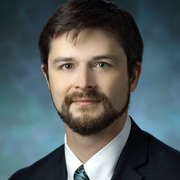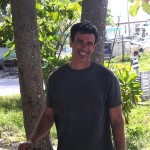This page addresses how Holotropic Breathwork works, how it was developed and how to do Holotropic Breathing. For a schedule of upcoming Holotropic Breathwork Workshops in Los Angeles, Click Here.
If you are from out of town and wish to attend an amazing Holotropic Breathwork weekend retreat in the beautiful Southern California desert at Joshua Tree, Click Here
If you would like to be notified of future Holotropic Breathwork related events in Southern California, Please Click Here
What Is Holotropic Breathwork, How Was Holotropic Breathwork Developed and How Does It Work ?

Dr. Stan Grof, Creator of Holotropic Breathwork
Dr. Stanislav (Stan) Grof worked with LSD for many years as a therapeutic tool back in the 1960s and found that the “non-ordinary states of consciousness” that his patients were able to access during these experiences had a tremendous healing power. When LSD was banned, he believed that since these healing states could be accessed with a substance, that the receptors for that type of experience existed in our brains so there should be a way to access the same states without the LSD. He then spent the next period of time researching both how traditional societies had accessed these states and he also studied modern consciousness theory. From his research and then by working with groups of volunteers at Esalen over a period of several months, he developed a one day workshop modality that allowed participants to access these incredibly healing non-ordinary states through the use of breath and music. He called this modality “Holotropic Breatwork” (the word “Holotropic” is from the Greek ὅλος holos “whole” and τρέπειν trepein “to turn or direct towards a thing”; meaning “moving toward wholeness”) . So, It is a logical hypothesis that Holotropic Breathwork works in a way that is very similar to how scientists currently, based on recent cutting edge research, think that using substances such as LSD and psilocybin work, i.e. by slowing our “default mode network” down:
It has been recently discovered that when someone takes a psychedelic, there is a decrease in blood flow and electrical activity in the brain’s “default mode network”, a group of brain structures found in the frontal and pre-frontal cortex. The default mode network is primarily responsible for our ego or sense of self; it “lights up” when we daydream or self-reflect.

Matthew Johnson, Principal Investigator, Johns Hopkins University
When we “trip”, our default mode network slows down. With the ego out of commission, the boundaries between self and world, subject and object dissolve. These processes may be related to something called the “primary mystical experience,” a phenomena highly correlated with therapeutic outcomes. As Matthew Johnson, a principal investigator in Johns Hopkins’s psilocybin studies, explains, these experiences include a “transcendence of time and space,” a sense of unity and sacredness and a deeply felt positive mood. Robin Carhart-Harris, a neuroscientist with Imperial College London, notes that the default mode network is responsible for a lot of our rigid, habitual thinking and obsessions. These [non-ordinary state of consciousness] experiences can help relax the part of the brain that leads us to obsess, which makes us calmer. And they can help “loosen if not break” the entrenched physical circuits responsible for addictive behavior.
Holotropic Breathing Technique Used In Holotropic Breathwork Workshops –
There is not a “proper” way to do holotropic breathing other than the instruction to “breathe deeper and faster than normal” so this is not a “guided” breathwork experience except in a very general sense. The important thing is to move more air through your system than you normally do. After 15 or 20 minutes, your body will normally find its own rhythm and you will generally no longer have to think about it. However, for people who want additional guidance, prior participants have found the following suggestions helpful when they start the holotropic breathing session.
1) Full deep breaths – make each breath full and deep, breathing into the “bottom” of your lungs so that when you breathe in, your belly should move out a bit (i.e. “diaphragm breathing”).
2) Continuous, “circular” breathing – the breathing in such a way where there is no gaps in the breath..i.e. not holding your breath at any point. When your lungs are almost full, you turn the breath around and start exhaling. When your lungs are empty, you immediately turn the breath around and start inhaling. This creates a breath pattern whereby you are always breathing in or breathing out, creating a circle of breath.
3) Faster than normal – You also want to breathe a bit faster than you normally would. However, you do not want to breathe so fast that you create tension in your body…your body, and especially your lungs, should be relaxed, without straining, so that the breath can be maintained for a long period of time without tiring yourself out.
4) Mouth vs Nose Breathing – It is easier to move air quickly through the mouth and mouth breathing tends to be more supportive of emotional release so most people find that breathing in and out through the mouth supports their process better than nose breathing. However, some people find that mouth breathing is uncomfortable for them in which case nose breathing is fine also.
But, again, after 15 or 20 minutes, everyone’s body will generally find their own rhythm and way of breathing. There are as many breathing styles as there are breathers.
For a schedule of upcoming Holotropic Breathwork Workshops in Los Angeles, Click Here.
If you are from out of town and wish to go to an amazing Holotropic Breathwork weekend retreat in the beautiful Southern California desert, Click Here

Sunset at Joshua Tree “Breathwork in the Desert” Holotropic Breathwork Fall Retreat
If you would like to be notified of future Holotropic Breathwork related events in Southern California, Please Click Here
NOTE: HOLOTROPIC BREATHWORK IS A TECHNIQUE THAT CAN EVOKE POWERFUL RELEASE OF SUPPRESSED TRAUMA AND SHOULD ONLY BE DONE UNDER THE SUPERVISION OF A GROF CERTIFIED HOLOTROPIC BREATHWORK FACILITATOR

